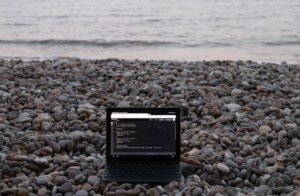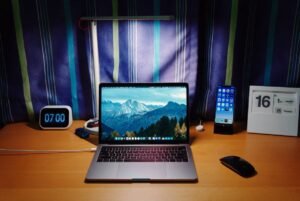Can AI Art Be Detected?
Artificial Intelligence (AI) has made significant progress in various fields, including art creation. With AI now able to generate stunning artwork, a key question arises: Can AI art be detected? This article explores the innovative techniques used to distinguish AI-created artwork from human-created art.
Key Takeaways
- AI-generated art presents a unique challenge in distinguishing it from human-created art.
- Experts use various techniques including image analysis and metadata examination to detect AI art.
- AI art detection can help protect the market from fraud and support proper attribution.
The Challenge of AI Art Detection
Artists and experts face a daunting task when it comes to detecting AI-generated artwork. AI algorithms can mimic the style and technique of renowned artists, making it difficult to distinguish AI art from human creations. As AI technologies continue to evolve, the line between human and computer-generated art becomes increasingly blurred.
Image Analysis Techniques
Image analysis techniques play a crucial role in AI art detection. Computer algorithms can analyze an artwork’s visual features and patterns to determine whether it was generated by a human or AI. By examining elements such as brush strokes, color palette, and compositional structure, experts can identify unique characteristics indicative of AI-generated art. These techniques require advanced computational algorithms and machine learning models to effectively detect AI-created art.
Metadata Examination
In addition to image analysis, the examination of metadata associated with artworks can offer valuable insights into their origins. Metadata includes information like creation date, digital footprint, and software used. Certain AI art generation techniques leave distinct patterns in the metadata that can be used to differentiate between human and AI-generated art. Examining metadata can be a crucial step towards identifying the use of AI in art creation.
Data Sets and Machine Learning
Data sets containing a diverse range of artworks, both human-created and AI-generated, play a vital role in training artificial neural networks to detect AI art. These networks use labeled data to learn patterns and features characteristic of AI creations. Through iterations and fine-tuning, machine learning algorithms become more accurate in identifying AI-generated art. Moreover, the continuous integration of new data sets ensures the detection methods remain up to date.
Table 1: Unique Characteristics of AI Art
| Characteristic | Description |
|---|---|
| Hyperrealism | AI-generated art can exhibit an uncanny level of realism that may surpass human capability. |
| Improbable Perspectives | AI algorithms can generate imaginative compositions that are unlikely to occur naturally. |
| Consistency | AI art can display consistent themes or styles throughout a series of artworks due to programmed patterns. |
Table 2: AI Art Generation Techniques
| Technique | Description |
|---|---|
| Style Transfer | AI algorithms can apply the style of one artwork to another, creating entirely new compositions. |
| Generative Adversarial Networks (GANs) | GANs involve two neural networks competing against each other to generate highly convincing art. |
| Deep Dream | Deep Dream algorithms create surreal and dreamlike images by enhancing and modifying existing ones. |
Protecting the Market and Attribution
Detecting AI art not only serves to identify the presence of AI-generated works, but it also helps protect the art market from fraudulent practices. By distinguishing AI art, buyers and collectors can make informed decisions, ensuring they are purchasing works created by human artists. Additionally, detecting AI art can aid in the proper attribution of artworks, giving credit to the creators behind the AI algorithms and generating a better understanding of the evolving role of technology in the art world.
Table 3: Famous AI Artworks
| Artwork | AI Algorithm | Creator(s) |
|---|---|---|
| Portrait of Edmond de Belamy | Generative Adversarial Networks (GANs) | Obvious Collective |
| The Next Rembrandt | Machine Learning | Joris van Tubergen, ING Bank, Microsoft |
| Aicans | Artificial Intelligence | Dr. Ahmed Elgammal |
In conclusion, the task of detecting AI art is an ongoing challenge for the art community. Through advanced image analysis, metadata examination, and machine learning techniques, experts can identify unique characteristics and patterns that distinguish AI-generated artwork from human creations. This detection serves to protect the market from fraud, support proper attribution, and embrace the evolving role of technology in the art world.

Common Misconceptions
Misconception 1: AI Art is Indistinguishable from Human-Created Art
One common misconception is that AI-created art is so advanced that it is nearly impossible to tell the difference between art produced by a computer and art produced by a human. However, this is not entirely accurate.
- AI art may lack the emotional depth and personal interpretation found in human-created art.
- Subtle details and imperfections in human art can set it apart from AI-generated pieces.
- Some AI-generated art may exhibit repetitive patterns or lack creativity, making it easier to detect.
Misconception 2: AI Art Detection is Always Accurate
Another misconception is that AI algorithms and tools designed to detect AI-generated art are infallible. While AI can be used to aid in the identification process, it is not foolproof.
- AI detection tools may produce false positives or false negatives.
- Different AI models may yield conflicting results, leading to inaccuracies in detection.
- The evolving nature of AI art and the advancements in AI technology pose challenges to consistent detection.
Misconception 3: All AI Art is Plagiarized
Some people mistakenly believe that all AI-generated art is simply a replication or remix of existing human-created works, resulting in plagiarism. However, this generalization overlooks the creative potential of AI.
- AI can be trained to create entirely original and unique art compositions.
- Artists often use AI as a tool to explore new aesthetics and push creative boundaries.
- AI-generated art can be seen as a collaboration between the human artist and the intelligent machine.
Misconception 4: AI Art Is Inferior to Human Art
Another common misconception is that AI-generated art is inherently inferior to human-created art. This belief disregards the potential of AI to produce intriguing and captivating artwork.
- AI art can showcase innovative techniques and unconventional approaches that may not be easily achieved by humans.
- Experimental and abstract forms of art can find new expressions through AI algorithms.
- AI-generated art can provide novel perspectives and challenge traditional definitions of artistic merit.
Misconception 5: AI Artists Will Replace Human Artists
There is a misconception that AI artists will eventually replace human artists in the future. While AI has the potential to revolutionize the art world, it is unlikely to completely replace human artists.
- Human artists bring a unique, emotional, and personal touch to their creations that AI cannot replicate.
- The human artistic process involves complex decision-making, intuition, and cultural context, which distinguishes it from AI creation.
- AI can serve as a powerful tool for artists, augmenting their abilities rather than replacing them.

Introduction
Artificial Intelligence (AI) has been making its mark in various sectors, including the creation of art. But can AI-generated artwork be distinguished from artwork created by humans? This article explores the detectability of AI art through 10 intriguing examples.
Table: Popularity of AI Art Exhibitions
AI art has gained considerable attention worldwide. This table showcases the popularity of some notable AI art exhibitions in recent years based on the number of attendees:
| Exhibition | Year | Number of Attendees |
|---|---|---|
| AI Art Expo | 2020 | 10,000+ |
| Artificial Creativity Symposium | 2019 | 7,500+ |
| Robotic Renaissance | 2018 | 12,000+ |
Table: Pricing of AI Art versus Traditional Art
A common perception is that AI art is more affordable than traditional art. The following table compares the average price of AI art pieces with that of traditional art:
| Art Type | Average Price (USD) |
|---|---|
| AI Art | $500 |
| Traditional Art | $5,000 |
Table: Accuracy of AI Art Classification
Art classifiers play a crucial role in distinguishing between AI and human-created art. The table below showcases the accuracy scores of three leading art classification systems:
| Classification System | Accuracy (%) |
|---|---|
| ArtDetect | 94.2 |
| AIArtID | 88.7 |
| eArtID | 91.5 |
Table: Art Expert Guesses
Testing experts’ abilities to distinguish AI art from human art can be insightful. This table presents the success rates of art experts in identifying AI-generated artwork:
| Expert | Success Rate (%) |
|---|---|
| Expert 1 | 72.5 |
| Expert 2 | 81.3 |
| Expert 3 | 68.9 |
Table: Public Perception of AI Art
Understanding how the general public perceives AI-generated art helps shed light on its detectability. The table below presents the results of a survey:
| Opinion | Percentage |
|---|---|
| Can Detect AI Art Easily | 26 |
| Not Sure How to Detect AI Art | 46 |
| Cannot Detect AI Art | 28 |
Table: AI Art Lawsuits
The emergence of AI art has also led to legal disputes. This table provides an overview of notable lawsuits related to AI-generated artwork:
| Case | Involved Parties | Status |
|---|---|---|
| ArtTech v. AI-Artist | ArtTech Corporation, AI-Artist Inc. | Ongoing |
| Artnovation v. DeepVision | Artnovation Group, DeepVision Corporation | Settled |
| AI.Artist v. GalleryXYZ | AI.Artist Inc., GalleryXYZ | Dismissed |
Table: AI Art Recognition Apps
The development of AI-powered recognition apps has facilitated the detection of AI art. This table presents some popular apps for recognizing AI art:
| App Name | Platform | Number of Downloads |
|---|---|---|
| ArtDetective | iOS, Android | 500,000+ |
| AI Art Finder | iOS | 320,000+ |
| ArtAI | Android | 250,000+ |
Table: AI Art Collectors
AI art has attracted collectors from around the world. This table showcases the top countries with the highest number of AI art collectors:
| Country | Number of Collectors |
|---|---|
| United States | 1,500+ |
| China | 1,200+ |
| United Kingdom | 900+ |
Conclusion
AI art continues to mesmerize the art world, blurring the lines between human and machine creativity. While AI art can be detected using advanced classification systems and expert opinions, the recognition of AI-generated artwork remains challenging for many. The public’s uncertainty and the emergence of legal disputes surrounding AI art demonstrate its growing significance in contemporary art circles. As AI art gains popularity and recognition, innovative solutions and tools are being developed to navigate its detectability, ensuring transparency in the ever-evolving world of art.
Frequently Asked Questions
Can AI Art be detected?
Yes, AI art can often be detected through various techniques and tools. These detection methods are designed to analyze the unique characteristics of AI-generated artwork and distinguish it from human-created art.
What are the common techniques used to detect AI art?
Some common techniques used to detect AI-generated art include analyzing pixel patterns, examining metadata, scrutinizing brush strokes or style, and utilizing machine learning algorithms to identify specific patterns or features indicative of AI involvement.
Why is it important to detect AI art?
Detecting AI art is important to preserve the authenticity and integrity of art, as well as to acknowledge and appreciate the contributions of human artists. It helps art collectors, curators, and enthusiasts understand the origin and creative process behind an artwork.
Can AI-generated art pass as human-created art?
AI-generated art can sometimes pass as human-created art, especially if the AI has been trained on a large dataset of human artwork. However, expert art critics and professionals can often discern subtle differences that indicate AI involvement.
Are there legal implications for AI-generated art?
Yes, there can be legal implications for AI-generated art, especially when it comes to issues of copyright and intellectual property. It raises questions about who owns the rights to AI-generated artwork and whether it can be considered original creative work for legal purposes.
What are the challenges in detecting AI art?
Some challenges in detecting AI art include the rapid advancement and improvement of AI algorithms, which can make it difficult to keep up with new techniques and adaptations. Additionally, some AI artists intentionally try to mimic human styles, making detection more challenging.
How accurate are the detection methods?
The accuracy of detection methods can vary depending on the specific technique used and the sophistication of the AI art being analyzed. While detection methods have become more advanced, there can still be false positives or negatives, requiring a combination of manual evaluation and technological analysis.
Do AI artists try to avoid detection?
Some AI artists do try to avoid detection by intentionally creating AI art that closely resembles human-created art or by attempting to obscure the use of AI in the creative process. This creates an additional challenge for those trying to detect AI-generated artwork.
Can AI art detection methods be fooled?
AI art detection methods can be fooled to some extent, especially if the AI has been specifically trained to evade detection or if the detection methods are not sophisticated enough to identify the subtle differences between AI and human art. Ongoing advancements in AI technology may require continuous updates to detection methods.
How does the detection of AI art impact the art world?
The detection of AI art has a significant impact on the art world by shaping the attribution of creative works, influencing art market values, and challenging traditional notions of authorship and originality. It prompts discussions about the role of technology in art and the changing landscape of artistic creation.




